
How to Use RS232 to TTL converter: Examples, Pinouts, and Specs
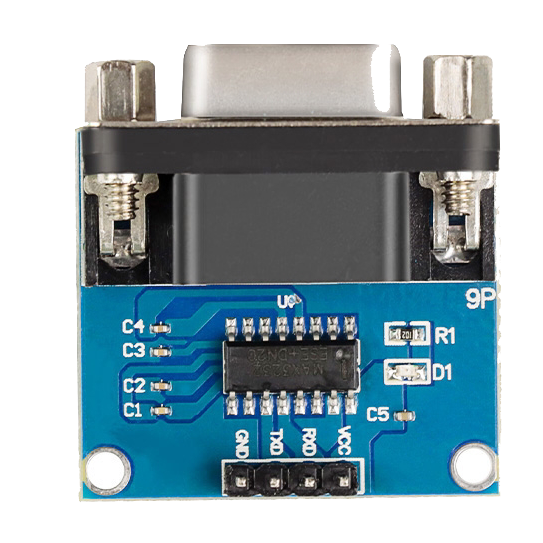
 Design with RS232 to TTL converter in Cirkit Designer
Design with RS232 to TTL converter in Cirkit DesignerIntroduction
The RS232 to TTL converter by CentIoT, featuring the MAX3232 chip, is an essential device for enabling communication between RS232-compatible devices and those using Transistor-Transistor Logic (TTL) signaling. This converter is widely used in serial communication applications such as interfacing microcontrollers, like Arduino, with RS232 devices like modems, serial monitors, and PCs.
Explore Projects Built with RS232 to TTL converter
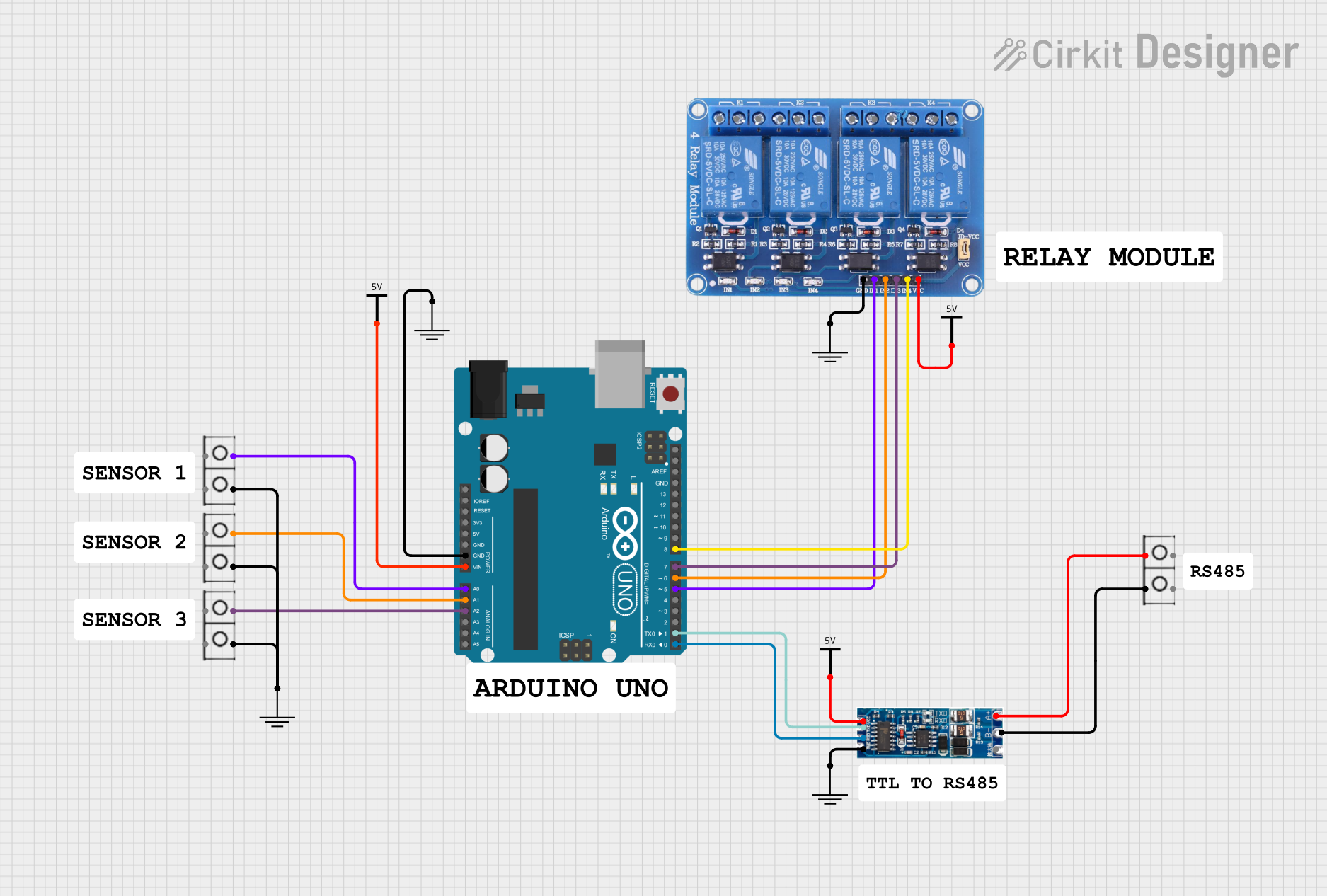
 Open Project in Cirkit Designer
Open Project in Cirkit Designer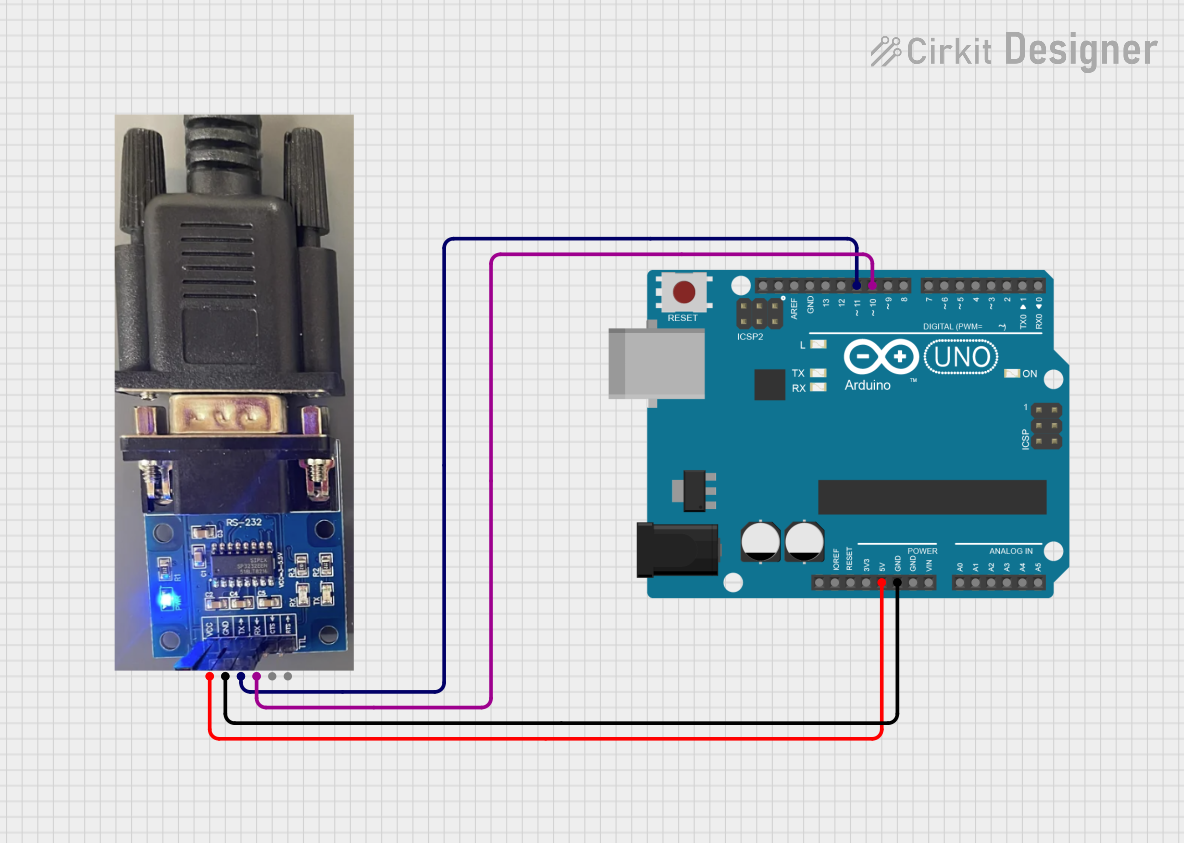
 Open Project in Cirkit Designer
Open Project in Cirkit Designer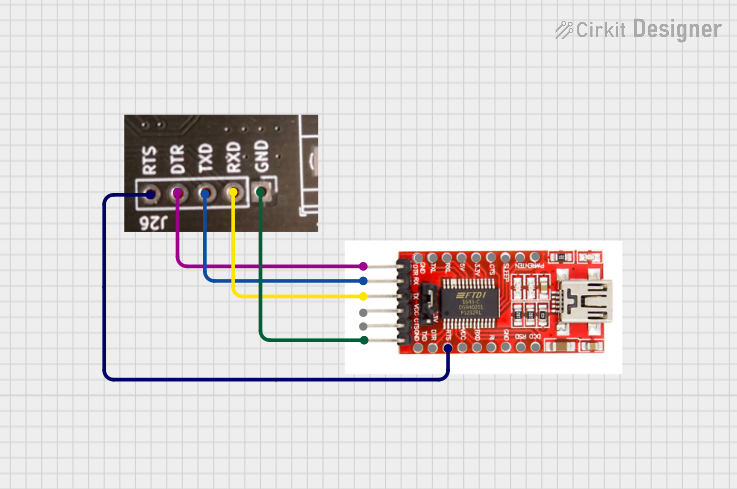
 Open Project in Cirkit Designer
Open Project in Cirkit Designer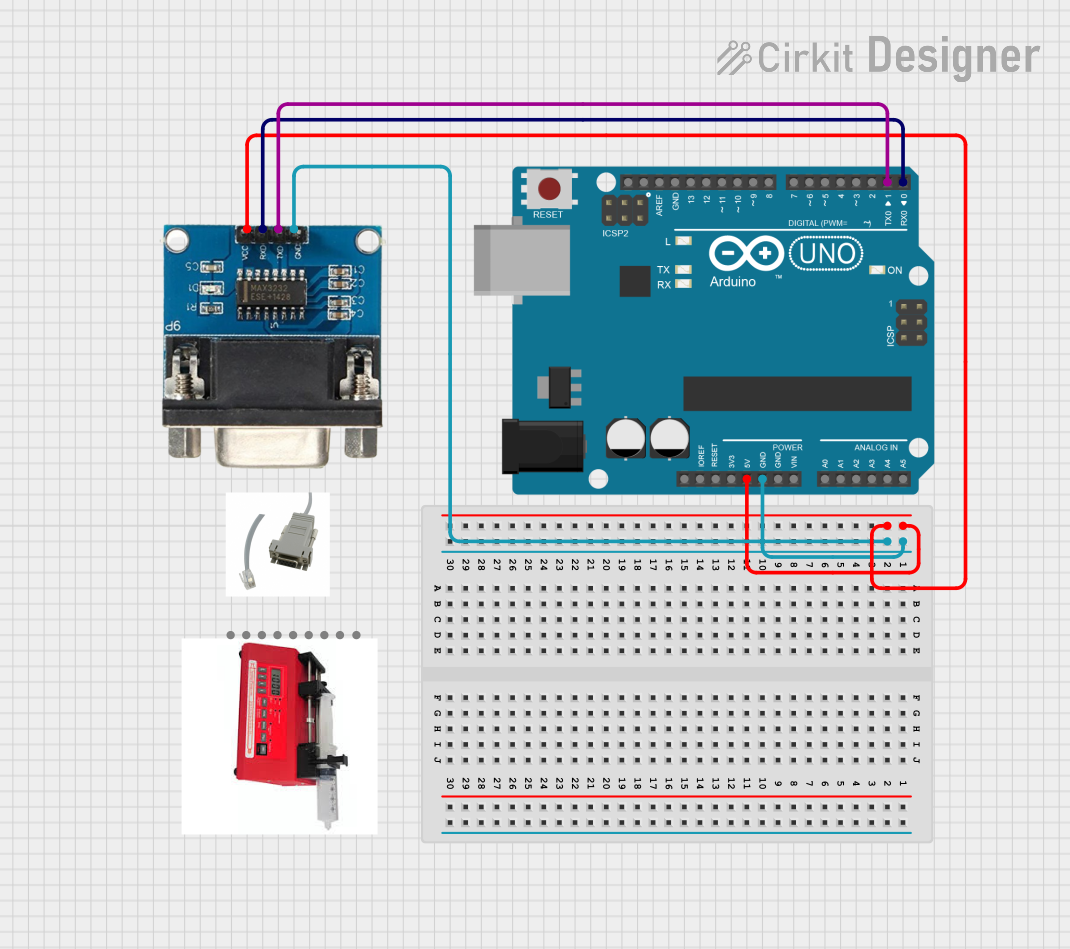
 Open Project in Cirkit Designer
Open Project in Cirkit DesignerExplore Projects Built with RS232 to TTL converter

 Open Project in Cirkit Designer
Open Project in Cirkit Designer
 Open Project in Cirkit Designer
Open Project in Cirkit Designer
 Open Project in Cirkit Designer
Open Project in Cirkit Designer
 Open Project in Cirkit Designer
Open Project in Cirkit DesignerCommon Applications and Use Cases
- Serial communication between microcontrollers and RS232 devices
- Data exchange with computer systems that have RS232 ports
- Debugging and programming of microcontrollers through serial ports
- Interfacing with sensors and peripherals that require RS232
Technical Specifications
Key Technical Details
- Voltage Levels: TTL (3.0V to 5.5V), RS232 (±3V to ±15V)
- Data Rate: Up to 250 kbps
- Number of Receivers and Transmitters: 2 Receivers, 2 Transmitters
- ESD Protection: ±15kV Human Body Model (HBM)
- Supply Current: 300 µA (Typical)
- Operating Temperature Range: -40°C to +85°C
Pin Configuration and Descriptions
| Pin Number | Name | Description |
|---|---|---|
| 1 | VCC | Connect to +3.3V or +5V power supply |
| 2 | T1IN | TTL input for transmitter 1 |
| 3 | R1OUT | RS232 output from receiver 1 |
| 4 | R1IN | RS232 input to receiver 1 |
| 5 | T1OUT | TTL output from transmitter 1 |
| 6 | GND | Ground connection |
| 7 | T2OUT | TTL output from transmitter 2 |
| 8 | R2IN | RS232 input to receiver 2 |
| 9 | R2OUT | RS232 output from receiver 2 |
| 10 | T2IN | TTL input for transmitter 2 |
| 11 | VCC | Connect to +3.3V or +5V power supply |
Usage Instructions
How to Use the Component in a Circuit
- Connect the VCC pin to a +3.3V or +5V power supply.
- Connect the GND pin to the system ground.
- Connect the T1IN and T2IN pins to the TTL signal sources (e.g., microcontroller TX pins).
- Connect the R1OUT and R2OUT pins to the RS232 signal destinations (e.g., DB9 connector).
- Connect the R1IN and R2IN pins to the RS232 signal sources (e.g., DB9 connector).
- Connect the T1OUT and T2OUT pins to the TTL signal destinations (e.g., microcontroller RX pins).
Important Considerations and Best Practices
- Ensure that the power supply voltage matches the voltage level required by the TTL side of your circuit.
- Use decoupling capacitors close to the VCC and GND pins to filter out noise.
- Avoid long wire runs for RS232 signals to minimize signal degradation.
- Use proper ESD precautions when handling the converter to prevent damage.
Example Connection with Arduino UNO
// Example code for interfacing RS232 to TTL converter with Arduino UNO
#include <SoftwareSerial.h>
SoftwareSerial mySerial(10, 11); // RX, TX
void setup() {
// Open serial communications:
Serial.begin(9600);
// Set the data rate for the SoftwareSerial port
mySerial.begin(9600);
}
void loop() { // run over and over
if (mySerial.available()) {
Serial.write(mySerial.read());
}
if (Serial.available()) {
mySerial.write(Serial.read());
}
}
Troubleshooting and FAQs
Common Issues Users Might Face
- No Data Transfer: Ensure that the TX and RX pins are correctly connected and not reversed.
- Garbled Data: Check if the baud rates of the devices are matched and properly configured.
- Power Issues: Verify that the VCC pin is supplied with the correct voltage.
Solutions and Tips for Troubleshooting
- Double-check the wiring and connections.
- Use a multimeter to verify the voltage levels on the VCC and GND pins.
- Ensure that the baud rate settings in your code match the baud rate of the connected RS232 device.
FAQs
Q: Can I use this converter with a 3.3V system? A: Yes, the converter can operate with a supply voltage from 3.0V to 5.5V.
Q: Is this converter compatible with all RS232 devices? A: The converter should work with most RS232 devices, but always check the device specifications to ensure compatibility.
Q: How can I protect my circuit from ESD? A: Use ESD protection methods such as grounding yourself before handling, using ESD-safe workstations, and storing the component in anti-static bags.
Q: Can I use this converter for high-speed data transmission? A: The converter supports data rates up to 250 kbps, which is suitable for many applications but may not be sufficient for very high-speed requirements.